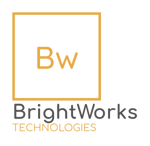Regulatory Compliance and IT: Navigating Industry Standards
In today's interconnected and data-driven world, regulatory compliance and information technology (IT) are inseparable. For businesses operating in various industries, navigating the complex landscape of industry-specific standards and regulations is essential to ensure data security, legal adherence, and overall business success. In this blog post, we will explore the vital intersection of regulatory compliance and IT and provide insights on how to navigate industry standards effectively.
Understanding Regulatory Compliance and IT
Regulatory compliance refers to the process of following the laws, rules, and regulations that apply to a specific industry or business. These regulations can relate to data protection, privacy, security, financial reporting, and many other aspects of business operations. Information technology, on the other hand, encompasses the use of technology and systems to manage, store, and transmit data and is integral to ensuring compliance.
Why Regulatory Compliance Matters
- Legal Consequences: Non-compliance can result in legal consequences, including fines, penalties, and legal actions that may cripple a business financially.
- Data Protection: Compliance standards often focus on data security and privacy, which are crucial in an era where data breaches and cyber threats are common.
- Reputation and Trust: Compliance demonstrates a commitment to ethical business practices, which can enhance your reputation and build trust with customers and partners.
- Competitive Advantage: Adherence to industry standards can set you apart from competitors and open new business opportunities.
Navigating Industry Standards in IT for Regulatory Compliance
1. Identifying Applicable Regulations
The first step is to identify the specific regulations and industry standards that apply to your business. This might include HIPAA, GDPR, PCI DSS, or industry-specific standards like ISO 27001.
2. Data Management and Security
Implement robust data management and security protocols that align with the regulatory requirements. This may involve encryption, access controls, regular security audits, and data protection measures.
3. Compliance Audits and Assessments
Conduct regular compliance audits and assessments to ensure that your IT systems and processes meet the required standards. This includes both internal and external assessments.
4. Documentation and Record-Keeping
Maintain detailed records of your compliance efforts. Accurate documentation is crucial in demonstrating your commitment to regulatory compliance.
5. Employee Training
Ensure that your employees are well-informed about the regulations and standards that apply to your industry. Offer training and awareness programs to keep them updated.
6. Incident Response Plans
Develop and test incident response plans that outline how to react in the event of non-compliance or data breaches. Rapid response can mitigate potential damage.
7. Collaboration with Experts
Consider partnering with IT professionals or consultants who specialize in regulatory compliance. Their expertise can help streamline compliance efforts.
8. Ongoing Monitoring
Regulatory standards evolve, and it's crucial to stay updated with any changes. Implement ongoing monitoring and adapt your IT systems accordingly.
Regulatory compliance and IT are intertwined, and businesses must navigate industry standards to succeed in today's complex regulatory environment. By understanding the significance of compliance, identifying applicable regulations, and implementing strong IT systems and protocols, you can demonstrate your commitment to ethical business practices, protect sensitive data, and gain a competitive edge in your industry. As the regulatory landscape continues to evolve, proactive efforts in regulatory compliance and IT will become even more critical to business sustainability and success.




